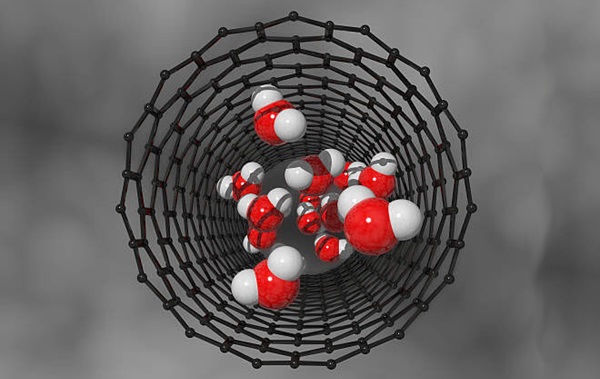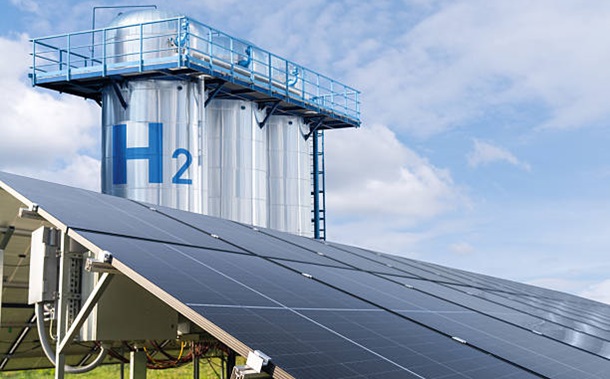Gum Rosin Characteristics as Alternative Coating Material to Improve High Voltage Outdoor Insulator Performance
Downloads
Numerous attempts have been made to enhance the performance of ceramic insulators, including insulators' design modification, surface coating application, and regular maintenance improvement. Room Temperature Vulcanized (RTV) silicone rubber, frequently employed as a coating for outdoor ceramic insulators, may deteriorate due to continuous exposure to ozone and ultraviolet (UV) light, resulting in a loss of insulating properties and potential surface cracking. This research aims to investigate the characteristics of new materials intended as additional coating materials for high voltage insulators to improve the performance of ceramic insulators. The proposed material, gum rosin (C20H30O2), is derived from the distillation of pine tree sap and possesses excellent hydrophobicity properties, meeting one of the requirements for an insulator. This research was carried out in two stages, which are characteristic tests of gum rosin as an additional coating material on RTV silicone rubber consisting of hydrophobicity, surface resistivity, relative permittivity (er), and tan delta, followed by a leakage current test of gum rosin and RTV silicone rubber-coated ceramic insulators to validate the insulation performance improvement. The results show that the addition of 5 wt.% gum rosin to the RTV silicone rubber can improve the characteristics of insulator coating material indicated by an increased contact angle of 7.85° and reduced leakage current magnitude up to 9.42% at a relative humidity of 70%, 7.1% at a relative humidity of 80%, and 10.02% at a relative humidity of 90%. These results proved that gum rosin can be used in addition to the conventional RTV silicone rubber coating material to improve the insulation characteristics of outdoor ceramic insulators.
Downloads
[1] Liu, Y., Guo, Y., Wang, B., Zhang, X., Huang, G., Zhang, G., Liu, Y., Deng, Q., & Wu, G. (2022). Pollution morphology characteristics on a superhydrophobic surface and its pollution flashover voltage in DC electric field. High Voltage, 7(3), 564–574. doi:10.1049/hve2.12165.
[2] Putri, D. Q. A., & Chumaidi, A. (2021). Sintesa DPR (Disproportionated Rosin) Dari Gum Rosin Grade X Secara Batch. DISTILAT: Jurnal Teknologi Separasi, 7(2), 302–309. doi:10.33795/distilat.v7i2.244.
[3] Wardah, A., & Chumaidi, A. (2022). Process Selection and Production Capacity Determination in the Disproportionated Rosin (DPR) Industry from Gum Rosin. DISTILAT: Jurnal Teknologi Separasi, 8(3), 663–669. doi:10.33795/distilat.v8i3.480.
[4] Rao Hunchate, S., Valikala, G., & Ghorpade, V. G. (2013). Influence of Water Absorption of the Ceramic Aggregate on Strength Properties of Ceramic Aggregate Concrete. International Journal of Innovative Research in Science, Engineering and Technology, 3297(11), 2319–8753.
[5] Orbeck, T., & Niemi, R. G. (2016). Study of surface leakage current and “Dry-Band-Arcing” on synthetic insulating materials and porcelain under wet high voltage conditions. Annual Report Conference on Electrical Insulation and Dielectric Phenomena, 43–50. doi:10.1109/eidp.1973.7683893.
[6] Chandrasekar, S., Ieee, M., & Kalaivanan, C. (2008). Investigations on Harmonic Contents of Leakage Current of Porcelain Insulator under Polluted Conditions. Fifteenth National Power Systems Conference (NPSC), December, 340–344.
[7] Shinoda, A., Okada, H., Nakagami, M., Suzuki, Y., Ito, S., & Akizuki, M. (2005). Development of high-resistance semi-conducting glaze insulators. 2005 IEEE Power Engineering Society General Meeting, 1, 999–1005. doi:10.1109/pes.2005.1489198.
[8] Terrab, H., El-Hag, A., & Bayadi, A. (2015). Characterization of leakage current on the surface of porcelain insulator under contaminated conditions. 2015 4th International Conference on Electric Power and Energy Conversion Systems, EPECS 2015, C(1), 1–4. doi:10.1109/EPECS.2015.7368527.
[9] Sartika, N., Naufalarizqa, R. M. P., Rachmawati, & Suwarno. (2018). Study on leakage current characteristics and computer simulation of semiconducting glazed insulator under clean and salt fog condition. Proceedings of the IEEE International Conference on Properties and Applications of Dielectric Materials, 2018-May, 82–85. doi:10.1109/ICPADM.2018.8401082.
[10] Vijayalekshmi, V., & Majeed, S. A. (2013). Mechanical, thermal and electrical properties of EPDM/Silicone blend nanocomposites. International Journal of Engineering Research and Applications, 3(2), 1177-1180.
[11] Asari, N., Sakaguchi, W., Shioiri, T., Kondo, J., & Wada, K. (2016). Influence of coating to surface flashover characteristics of alumina ceramics in vacuum. Proceedings - International Symposium on Discharges and Electrical Insulation in Vacuum, ISDEIV, 2016-November, 8–11. doi:10.1109/DEIV.2016.7748689.
[12] Burachevsky, Y., & Bakeev, I. (2020). Properties of electrical insulation coatings from yttrium-stabilized zirconia and Alumina. Proceedings - 2020 7th International Congress on Energy Fluxes and Radiation Effects, EFRE 2020, 827–830. doi:10.1109/EFRE47760.2020.9242018.
[13] Mahmood, A., & Alam, S. (2022). RTV-SiR based composites aged in a multi-stressed environment under AC and bipolar DC voltages. Journal of Elastomers and Plastics, 54(7), 1091–1111. doi:10.1177/00952443221131199.
[14] Kamand, F. Z., Mehmood, B., Ghunem, R., Hassan, M. K., El-Hag, A., Al-Sulaiti, L., & Abdala, A. (2022). Self-Healing Silicones for Outdoor High Voltage Insulation: Mechanism, Applications and Measurements. Energies, 15(5), 1–17. doi:10.3390/en15051677.
[15] Wang, W., Yang, F., Zhang, P., Luo, Z., Li, F., Jiang, J., Zhang, J., Li, W., Liu, A., & Qin, C. (2023). Preparation of Polyurethane-Modified Silicone Rubber Insulating Coating and Its Application in 10 kV Overhead Bare Wire Wrapping. Coatings, 13(5), 837. doi:10.3390/coatings13050837.
[16] Shi, B., Xu, Y., Zhang, F., Ren, S., Li, P., Ning, M., Li, J., & Sun, W. (2024). Preparation of Stable Superhydrophobic Anti-icing Coating on the Surface of Silicone Rubber Insulators. ACS Applied Polymer Materials, 6(17), 11006–11015. doi:10.1021/acsapm.4c02201.
[17] Wei, X., Jia, Z., Sun, Z., Liao, W., Qin, Y., Guan, Z., Xu, Z., & Peng, X. (2012). Study of anti-icing performance of insulator strings bottom-coated with semiconductive silicone rubber coating. IEEE Transactions on Dielectrics and Electrical Insulation, 19(6), 2063–2072. doi:10.1109/TDEI.2012.6396966.
[18] Jamaludin, F. A., Ab-Kadir, M. Z. A., Izadi, M., Azis, N., Jasni, J., & Abd Rahman, M. S. (2016). Considering the effects of a RTV coating to improve electrical insulation against lightning. 2016 33rd International Conference on Lightning Protection, ICLP 2016, 3–7. doi:10.1109/ICLP.2016.7791414.
[19] Ramesh, R., & Sugumaran, C. P. (2017). Reduction of flashover in ceramic insulator with nanocomposites. In 2017 3rd International Conference on Condition Assessment Techniques in Electrical Systems, CATCON 2017 – Proceedings, 418–422. doi:10.1109/CATCON.2017.8280256.
[20] Deng, X. (2024). Preparation and performance study of a new solvent-free insulation coating for low-voltage busbar. Journal of Physics: Conference Series, 2879(1), 012020. doi:10.1088/1742-6596/2879/1/012020.
[21] Wei, G., Liu, H., Zhou, Y., Sun, J., Luo, J., Miao, J. T., & Liu, R. (2024). Solvent-free high-performance insulating coatings from photocurable polyimide resin for electronic circuit boards. Progress in Organic Coatings, 189, 108260. doi:10.1016/j.porgcoat.2024.108260.
[22] Chabibah, R. A., M., D. R., Sari, E. K., Habiba, S., & Chumaidi, A. (2023). Economic Analysis of Pre-Design of Disproportionated Rosin (DPR) Chemical Plant with Capacity of 2000 Ton/Year. DISTILAT: Journal of Separation Technology, 7(2), 436–442. doi:10.33795/distilat.v7i2.250.
[23] Sha, Y., Chen, X., Sun, W., Hu, Y., Wang, C., Xu, E., Luo, Z., & Jia, P. (2024). Chemically recyclable rosin-based polymers. European Polymer Journal, 213. doi:10.1016/j.eurpolymj.2024.113141.
[24] Cai, H., Xie, C., Gou, B., Zhou, J., Zhong, A., Zhang, D., Xu, H., Bi, C., & Wang, R. (2024). Durable superhydrophobic insulating coatings for prevention of wet flashover and icing in power system. Applied Surface Science, 671. doi:10.1016/j.apsusc.2024.160768.
[25] Khadijah, A. I., & Chumaidi, A. (2023). Effect of Hydrochloric Acid Volume on Physical Characteristics of Disproportionated Rosin (Dpr) from Gum Rosin Raw Material Type WG. DISTILLATE: Journal of Separation Technology, 8(3), 621–626. doi:10.33795/distilat.v8i3.393.
[26] Diantari, R. A., Rachmawati, Khayam, U., & Suwarno. (2023). Insulator Coating to Improve Outdoor Insulator Performance. Proceedings of 2023 4th International Conference on High Voltage Engineering and Power Systems, ICHVEPS 2023, 287–292. doi:10.1109/ICHVEPS58902.2023.10257536.
[27] Hartono, R., Yanuwiadi, B., & Hakim, L. (2018). The Potential of Sumatran Pine Rosin (Gondorukem) for Reinforcement-Steel Coating in Wet Environment. Jurnal Pembangunan Dan Alam Lestari, 9(1), 15–18. doi:10.21776/ub.jpal.2018.009.01.03.
[28] Isa, M., Othman, M., Abdullah, A. Z., Piah, M. A. M., Rahman, N. A., & Mazlee, M. N. (2019). Characteristics of RTV Coating on Ceramic Insulator. 2019 IEEE International Conference on Automatic Control and Intelligent Systems, I2CACIS 2019 - Proceedings, June, 114–117. doi:10.1109/I2CACIS.2019.8825080.
[29] IEC-62073 (2016). Guidance on the Measurement of Hydrophobicity of Insulator Surfaces. IEC: Geneva, Switzerland.
[30] Pratiwi, A. I., & Asri, M. (2021). Analysis of Breakdown Voltage and Hydrophobicity of Epoxy Resin and SiO2 Composite Nano Insulator. Jambura Journal of Electrical and Electronics Engineering, 3(2), 89–93. doi:10.37905/jjeee.v3i2.10763.
[31] Tudose, I. V., Suchea, M., Siderakis, K., Thalassinakis, E., & Koudoumas, E. (2014). Comparative study on field collected samples of aged silicon rubber composite coatings for high voltage insulators. Acta Chemica Iasi, 21(2), 93–106. doi:10.2478/achi-2013-0009.
[32] Matweb (2015). Overview of materials for Silicone Rubber. MatWeb, Virginia, United States. Available online: http://www.matweb.com/search/datasheet.aspx?MatGUID=ff6d4e6d529e4b3d97c77d6538b29693 (accessed on May 2025).
[33] Cobbold, P. R., & Jackson, M. P. A. (1992). Gum rosin (colophony): A suitable material for thermomechanical modelling of the lithosphere. Tectonophysics, 210(3–4), 255–271. doi:10.1016/0040-1951(92)90325-Z.
[34] EDMS 29-300-1. (2021). Specification for Electrical Insulation Coating. Ministry of Electricity and Renewable Energy, Egyptian Electricity Holding Company, 1–12.
[35] Tanaka, H., Kawashima, T., Murakami, Y., & Nagao, M. (2015). Flashover characteristics of silicone rubber surface influenced by surface charge. Annual Report - Conference on Electrical Insulation and Dielectric Phenomena, CEIDP, 2015-December, 836–839. doi:10.1109/CEIDP.2015.7352059.
[36] Stoops, W. N. (1934). The Dielectric Properties of Cellulose. Journal of the American Chemical Society, 56(7), 1480–1483. doi:10.1021/ja01322a011.
[37] Madidi, F., Momen, G., & Farzaneh, M. (2018). Dielectric Properties of TiO2/Silicone Rubber Micro‐ and Nanocomposites. Advances in Materials Science and Engineering, 4682076. doi:10.1155/2018/4682076.
[38] Diantari, R. A., Nalendra, A. D., Rachmawati, Permatasari, F. A., Khayam, U., & Suwarno. (2024). The Effect of Silicone Rubber on the Relative Permittivity and Hydrophobicity of Gum Rosin as an Alternative Outdoor Insulator Coating. Proceedings of the IEEE International Conference on Properties and Applications of Dielectric Materials, 262–265. doi:10.1109/ICPADM61663.2024.10750698.
[39] Law, K. Y. (2014). Definitions for hydrophilicity, hydrophobicity, and superhydrophobicity: Getting the basics right. Journal of Physical Chemistry Letters, 5(4), 686–688. doi:10.1021/jz402762h.
[40] Putra, N. R. M., Sartika, N., Rachmawati, & Suwarno. (2018). The study on leakage current waveform characteristics and computer simulation of ceramic insulator under artificial tropical condition. Proceedings of the IEEE International Conference on Properties and Applications of Dielectric Materials, 2018-May, 320–323. doi:10.1109/ICPADM.2018.8401273.
[41] Bagaskara, A., Rachmawati, & Suwarno. (2024). Environmental Effects on Parameters of Leakage Current Equivalent Circuits of Outdoor Insulators. Emerging Science Journal, 8(1), 310–325. doi:10.28991/ESJ-2024-08-01-022.
[42] Pakaya, F., Ardhyananta, H., & Wicaksono, S. T. (2017). Mechanical Properties and Thermal Stability of Epoxy/RTV Silicone Rubber. IPTEK The Journal for Technology and Science, 28(1), 7. doi:10.12962/j20882033.v28i1.2216.
[43] Haya, S. N., Jaelani, A. A., Lumba, L. S., & Suwarno. (2021). Accelerated Aging Study on Silicone Rubber Insulator with Contaminant Level and Fog Conductivity Variations. 2021 3rd International Conference on High Voltage Engineering and Power Systems (ICHVEPS), (5-6 October 2021), Bandung, Indonesia. doi:10.1109/ichveps53178.2021.9601100.
[44] Suwarno, & Wibowo, A. B. (2012). Increasing the performances of various types outdoor insulators by using RTV silicone rubber coating. International Journal on Electrical Engineering and Informatics, 4(4), 608–619. doi:10.15676/ijeei.2012.4.4.7.
[45] Mackevich, J., & Shah, M. (1997). Polymer outdoor insulating materials Part I: Comparison of porcelain and polymer electrical insulation. IEEE Electrical Insulation Magazine, 13(3), 5–12. doi:10.1109/57.591510.
[46] Zhijin, Z., Tian, L., Xingliang, J., Chen, L., Shenghuan, Y., & Yi, Z. (2019). Characterization of Silicone Rubber Degradation under Salt-Fog Environment with AC Test Voltage. IEEE Access, 7, 66714–66724. doi:10.1109/ACCESS.2019.2917700.
[47] Olave, C., Trinidad, P., Molina, I., & Sundararajan, R. (2005). Influence of acid rain + multistress conditions on the long-term performance of 28kV polymeric insulators. Annual Report - Conference on Electrical Insulation and Dielectric Phenomena, CEIDP, 2005, 341–344. doi:10.1109/CEIDP.2005.1560691.
[48] Mehmood, B., Akbar, M., & Ullah, R. (2020). Accelerated aging effect on high temperature vulcanized silicone rubber composites under DC voltage with controlled environmental conditions. Engineering Failure Analysis, 118, 104870. doi:10.1016/j.engfailanal.2020.104870.
[49] Rachmawati, Alifianda, A. R., Nalendra, A. D., Permatasari, F. A., & Suwarno. (2024). Effects of nSiO2-filled RTV Silicone Rubber Coating on Leakage Current Characteristics of Outdoor Insulators. 2024 10th International Conference on Condition Monitoring and Diagnosis, CMD 2024, 378–381. doi:10.23919/CMD62064.2024.10766238.
- This work (including HTML and PDF Files) is licensed under a Creative Commons Attribution 4.0 International License.



















